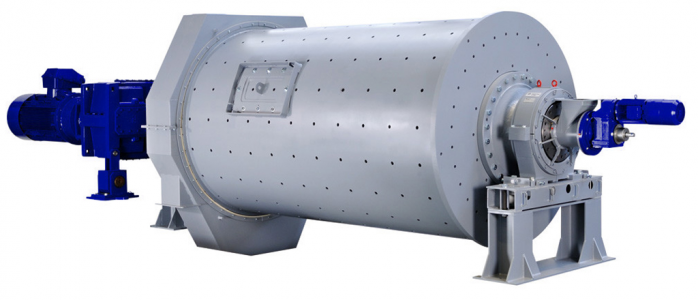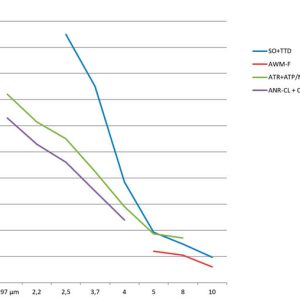
Hosokawa ALPINE Ball Mill – Super Orion S.O.
Calcium Carbonate (GCC) produced from chalk, limestone, calcite or marble have developed in recent years from just being a simple cheap filler to highest quality functional additives. GCC is used as dry powder or slurry in many industrial applications for plastic, paint, rubber, sealants or paper. Furthermore, a strong trend and shift to significantly finer grades is clearly observed in the range of finer than d97 < 10 μm to d97 < 1.6 μm. Special designed very steep particle size distributions as an functional additive for the production of breathable film in the hygiene field (for example baby diapers) or building material represent a further demanding challenge.
GCC as an additive in almost all polymers must be subjected to a surface treatment, known as coating by means of technical stearic acid. Again, the requirements in recent years into highest coating GCC quality have been extremely screwed up. Highest hydrophobicity, few ppm residues in the upper size area of the particle size distribution, best 100% coating grade are required here. These demanding requirements are already met worldwide with Hosokawa Alpine equipment. For standard GCC fillers in the range d97 = 8 – 45 μm, a whole range of grinding / classifying processes are available with the focus on the lowest possible specific energy consumption.
Ultrafine Calcium Carbonate and Perfect Coating
In the production of ultrafine calcium carbonate additives, various aspects must be considered when selecting and deciding among available types of processing systems:
Fineness range, annual output (uncoated and coated GCC), dry or wet grinding, specific energy consumption, investment costs, plant engineering, running costs and logistical aspects.
Continuous development enables today ‘s ball mill – classifying systems to cover a wide capacity and fineness range of d97 = 5 – 45 μm. Vertical Dry Agitator Ball Mills, such as the ATR System, are used for the energy-efficient production of GCC powders in the range of d97 = 2.5 μm to 10 μm in the field of low to medium capacities. Greater finenesses up to d97 = 1.6μm, especially at high outputs, are most efficiently produced by vertical wet mill systems such as the ANR-CL and either used directly as a slurry in the paint or paper industry or by means of an Atritor Cell Mill in a single process step dried, optionally coated and top cut cleaned by means of an integrated air classifier.
Dry processed GCC powder for the plastics industry achieves the highest quality available in the market by coating in a fully optimized Contraplex pin mill system with feed powder heating and top cut control by an MS-classifier with less than a few ppm residues on a 20 μm wet sieve.
BF-GCC Filler in Breathable Film
Requirements and Key Points in today’s Calcium Carbonate industry:
- Manufacture and supply of GCC at consistent high quality
- Readiness to deliver all GCC qualities, anytime
- Shifting the product portfolio significantly into profitable range < d97 = 10 μm
- Ensuring a constant and consistent particle size distribution
- Perfect top cut limitation coated and uncoated GCC
- Assuring highest possible quality of coated GCC
- Lead the competition in fineness and quality
- Use of processes with lowest specific energy consumption
- Use of state-of-the-art machine diagnostics – Predictive maintenance
Product fineness and energy consumption
| D97 | SO + TTD (kW/t) | AWM-F (kW/t) | ATR + ATP (kW/t) | ANR-CL + Cell Mill (kW/t) |
|---|---|---|---|---|
| 2.2 µm | x | x | 720 | 630 |
| 2.5 µm | x | x | 615 | 530 |
| 3.7 µm | 950 | x | 550 | 460 |
| 4 µm | 750 | x | 425 | 350 |
| 5 µm | 385 | x | 260 | 240 |
| 8 µm | 192 | 120 | 187 | x |
| 10 µm | 147 | 105 | 155 | x |
| 20 µm | 97 | 60 | 120 | x |
Process animation Air Classifier TTD combined with a Super Orion Ball Mill Superfine (SO-SF)


